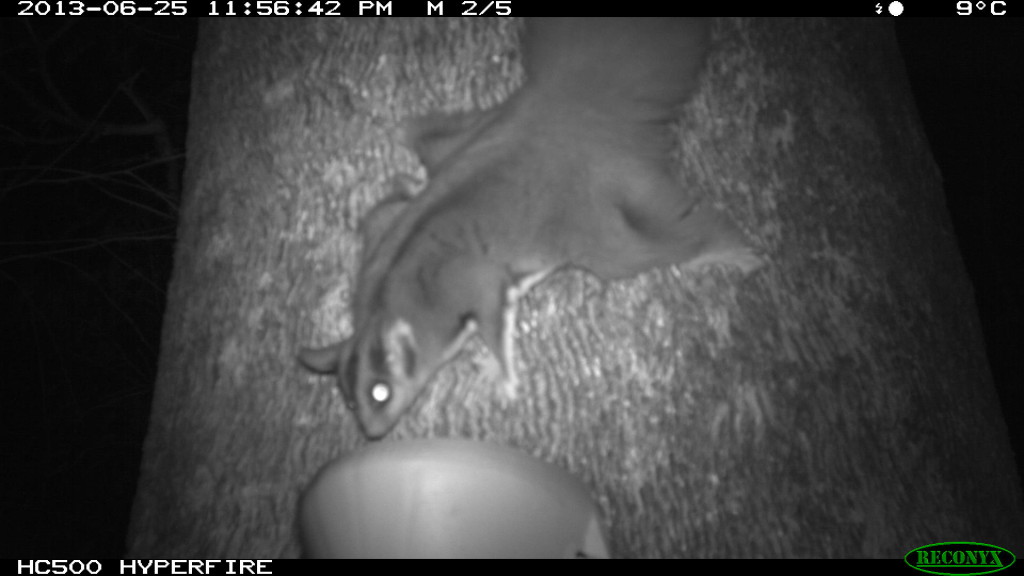16 July 2014 – Report released – The effects of urban encroachment on the use of hollow-bearing trees by Squirrel Gliders in Thurgoona, NSW (Mitchell Francis / Peter Spooner)
A study into Thurgoona’s Squirrel Glider population, funded by Albury Conservation Company, has recently been completed by Charles Sturt University.
Urban encroachment upon the natural world is increasing globally due to human population growth. The expansion of urban areas results in vegetation clearing, fragmentation, and modification of remaining habitat patches. Urban areas present various challenges for animals, where anthropogenic factors such increased light and noise pollution and barrier effects are a key determinant of species persistence. In Australia, the influence of urban encroachment is of particular concern for the squirrel glider (Petaurus norfolcensis), as its distribution coincides where with the majority of the human population lives.
This study examined the relative influence of biophysical and urban factors on the use of large hollow bearing Eucalyptus trees by gliders in a typical urban growth area located in southern NSW. A stratified random sampling approach was used to select 34 large trees in urban and rural areas, where infrared, motion-sensor cameras were placed in selected trees for 17 camera-trap night to record squirrel glider occupancy and activity. Data on anthropogenic urban (e.g. light and noise pollution levels, road and housing density) and biophysical variables (e.g. tree height, hollow-bearing tree density, vegetation cover) was recorded at each tree.
Squirrel gliders were present in 58.8% of trees located in rural trees, and in 44.4% of those located in urban areas. In the Thurgoona study area, the occupancy and use of hollow-bearing trees by squirrel gliders was influenced by a combination of tree and anthropogenic variables. Model results showed that tree height, and the distance to neighbouring trees, had a strong influence on the use of survey trees by squirrel gliders. Anthropogenic factors such as noise, light and road density influenced findings to a lesser extent, but were also significant. The variability in results is partly attributed to individual site (tree) characteristics, survey methods and seasonal factors, as discussed. Although gliders used large trees in both urban and rural areas, occupancy generally decreased as levels of urbanisation increased. This study highlights the importance of protecting native vegetation in areas experiencing urban encroachment, and the need to develop novel solutions to lessen the effects of noise and light pollution.

